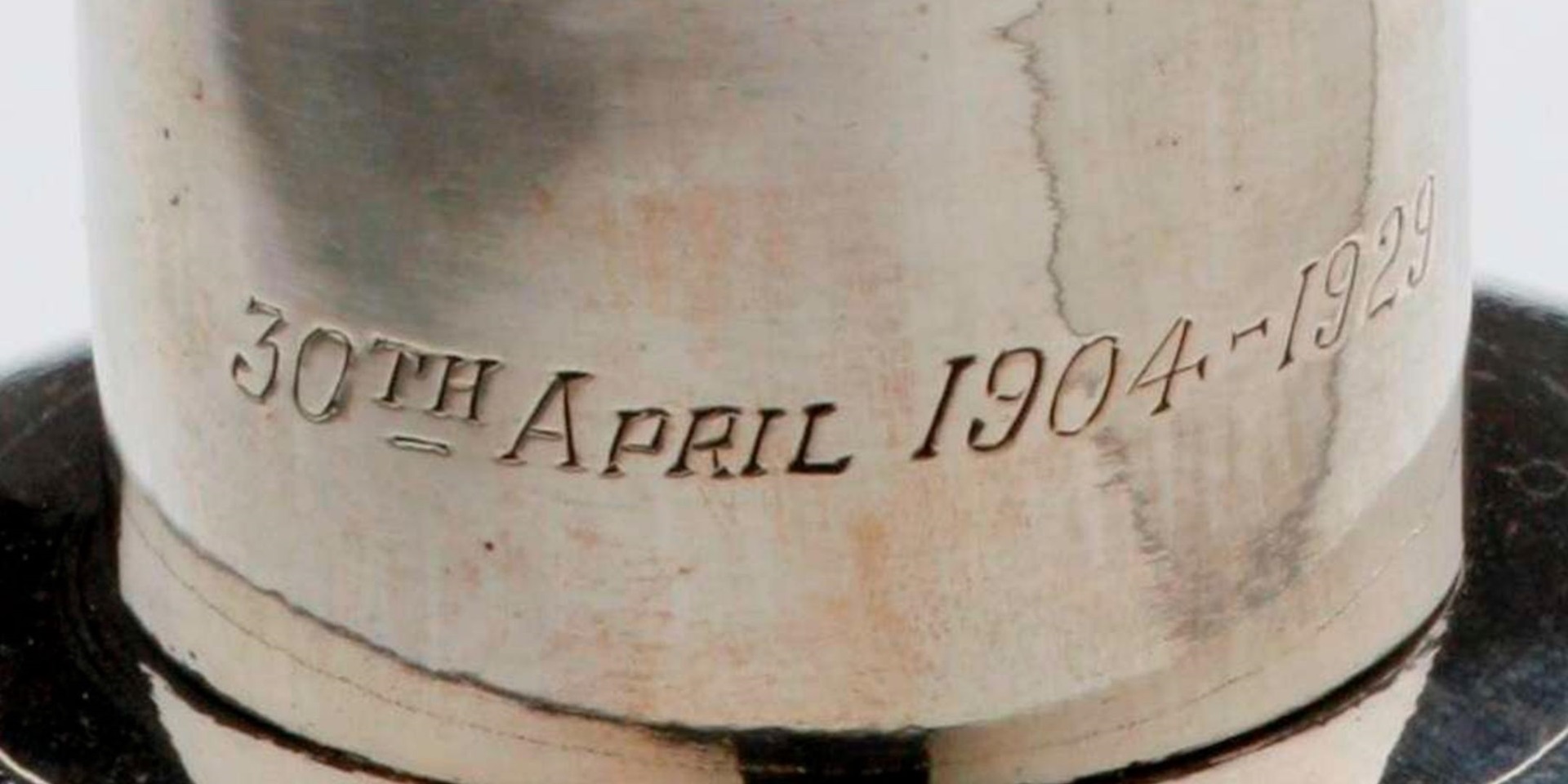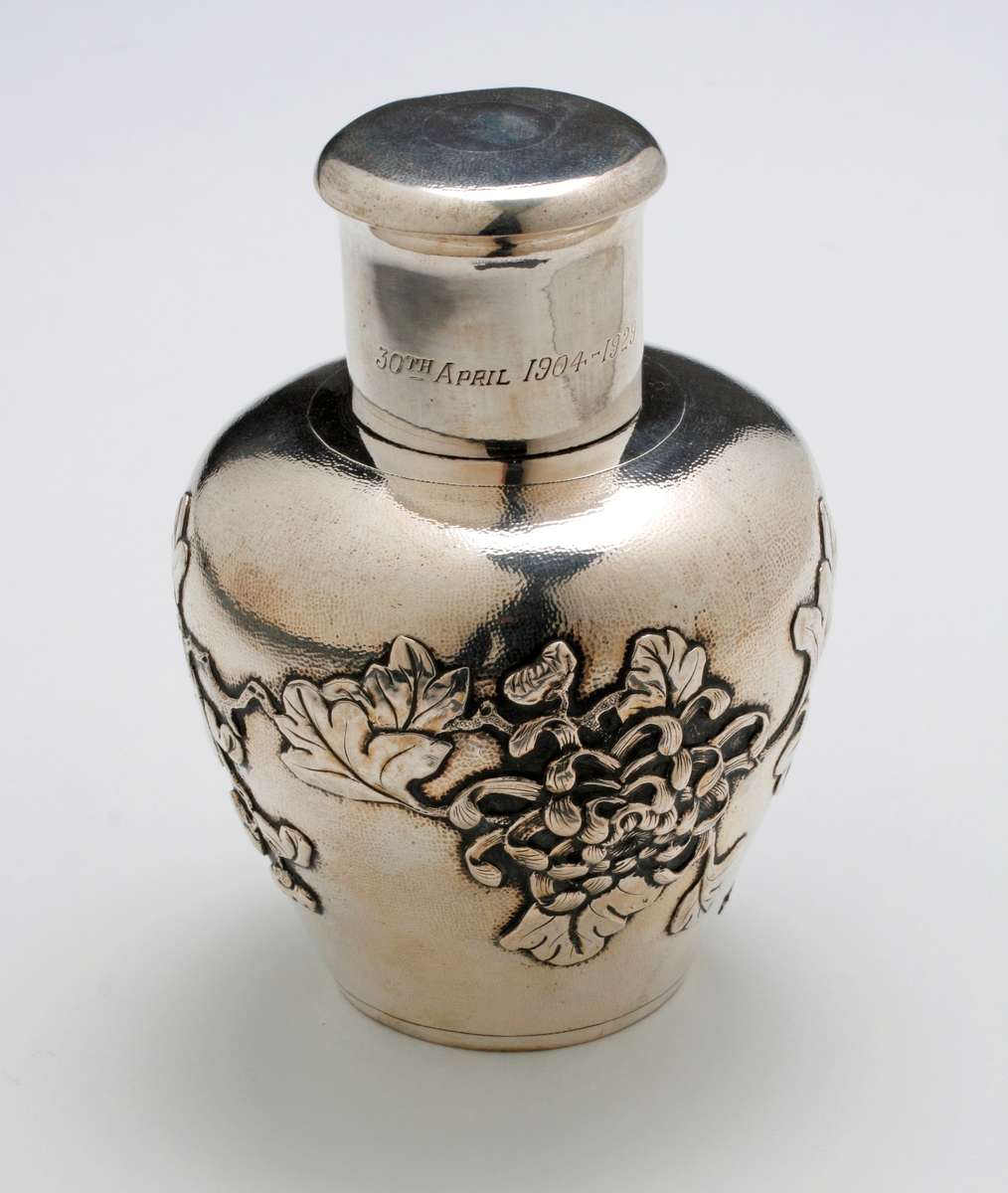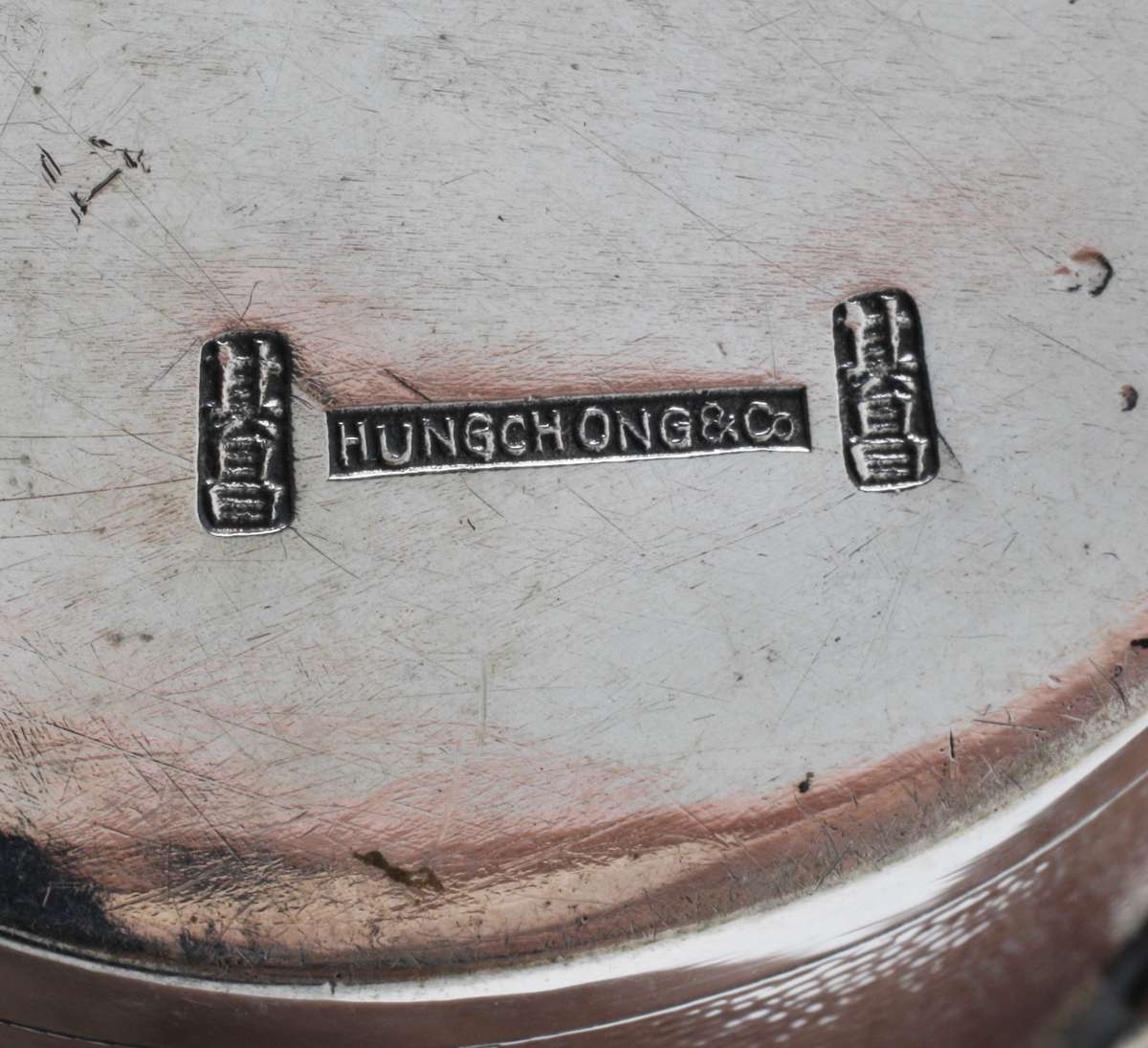
Object of the Week: A Chinese tea caddy

Chinese tea caddy, ANMM Collection
This Chinese tea caddy was exported during the prolific tea trade of the 19th and 20th centuries. It has a pear shaped body decorated with finely grained chrysanthemum blossoms. The cylindrical cover was used to measure tea prior to the introduction of tea caddy spoons and is inscribed with the date, 30th April 1904-1929. The base features three hallmarks, including the manufacturer’s stamp of Hung Chong & Co, who worked out of Canton and Shanghai, China. It was owned and commissioned by an Australian merchant working in Shanghai, probably as a gift or memento.
Hung Chong & Co were influential and respected jewellers based out of Club Street, Honan Island Canton and Nanking Road, Shanghai in China between 1850 and 1930. During this period Shanghai became one of the major tea trading ports in China with the introduction of steam navigation on the Yangtze River in 1861.
Western merchants from America, Australian and Europe actively traded with China during the 19th and 20th centuries. On their ships they brought back items including metal domestic wares, paintings, furniture, carvings and tea. The exportation of silverware objects has been less acknowledged than other materials, as Chinese artists commonly used pseudo-marks on their manufactured wares, making it difficult to distinguish them from products made in Europe or America.

Hallmarks on the tea caddy base
Founded in the 10th century, the city of Shanghai is located east of Suzhou at the mouth of the Yangtze River. Its importance in the region grew due to its extensive irrigation system and it soon became a major cotton production and manufacturing centre with a population of over 250,000 people.
In the 19th century the importance of Shanghai developed further as the city’s strategic position at the mouth of the Yangtze River was perceived by westerners as an ideal location for trade with the Chinese hinterland. Following the First and Second Opium Wars, Shanghai was recognised as one of the Treaty Ports established by the 1842 Treaty of Nanjing, the 1843 Treaty of Bruges and the 1844 Sino-American Treaty of Wangsia and foreigners were allowed to establish trading factories and European settlements inside the city.

Date inscription
These treaties opened the floodgate of western culture and influence into Shanghai. Over time two cities emerged: a chaotic Chinese city and a western city, inhabited mainly by Chinese. The western part of Shanghai was one of the most modern “European” cities in the world – often called the Paris of the East. New inventions like electricity and trams were quickly introduced, and westerners turned Shanghai into a huge metropolis with the western part of Shanghai nearly four times larger than the Chinese part in the early 20th century. British, American, French, German and Australian businesses made a great deal of money in the tea trade, real estate and finance and by the early 1920s half of all China’s imports and exports passed through the city of Shanghai.
This tea caddy is a lovely example of Chinese silverware and highlights the importance of tea as a western commodity in the 20th century. I talso represents the Chinese exportation of silverware by American, Australia and European merchants. The Australian National Maritime Museum collection contains a number of other Chinese export and trade items, including other silver tea caddies, pewter tea pots, snuff boxes, tea boxes, ivory fans, dinner sets and cutlery, which you can now browse on-line.
